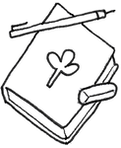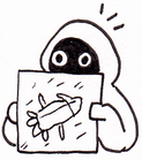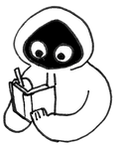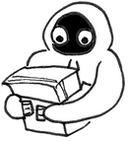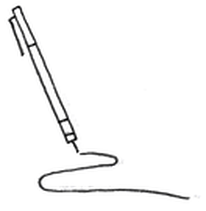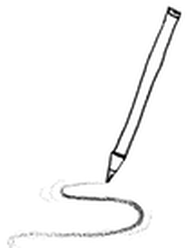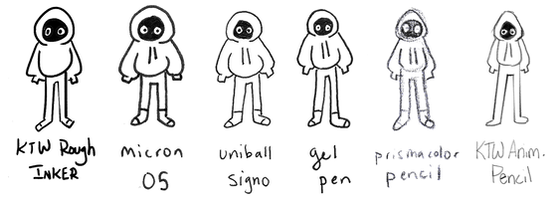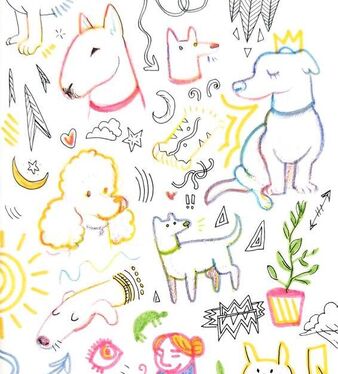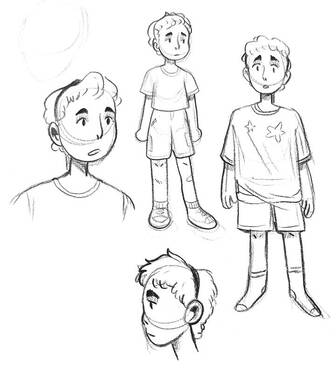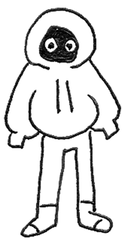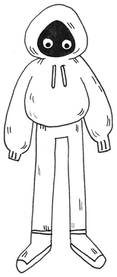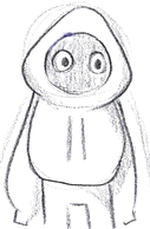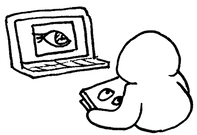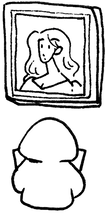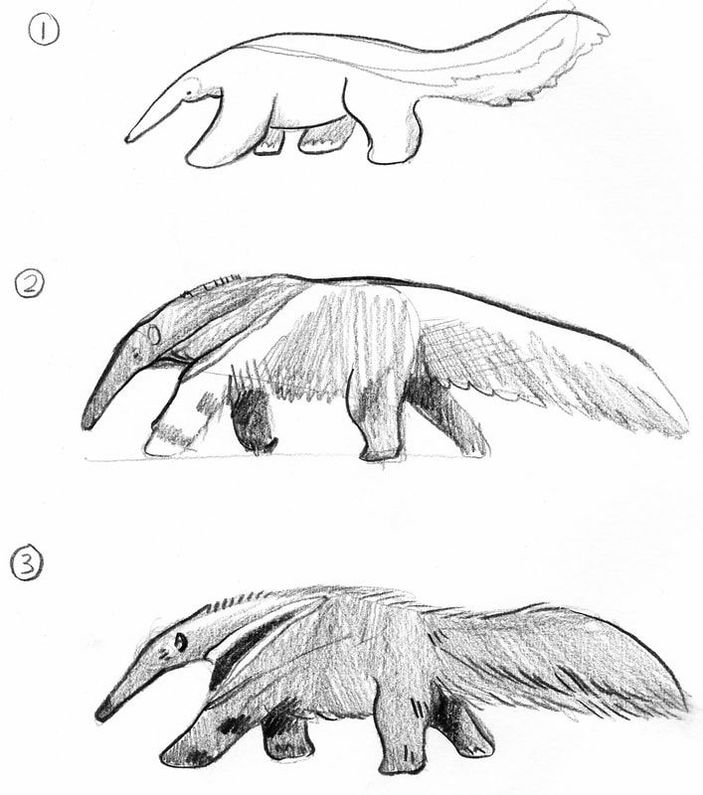|
10/7/2018 1 Comment Drawing TipsI have a few encouraging thoughts for anyone who has wanted to draw more, and good news! Drawing has many other purposes that span beyond professional work and are accessible to any skill level. Purposes of DrawingOkay, so, here's the deal. Drawing has so many other uses humans the ones that we generally judge to be acceptable beyond a career or an activity for kids. When we don't feel proficient in an activity and feel that others may judge us on our skill level, we often give a disclaimer of some sort. Think of teachers repeating "I'm not an artist" before using the whiteboard to demonstrate an idea. Sometimes when I tell people I'm an artist their first response is to disclaim their own lack of skill, usually, "I can't even draw a stick figure." I never know what to say to this I'm just going to say it here: "That's okay!! I'm not judging you and I'll fight anyone who would!! Everyone gets better with practice and if you want to I'm cheering you on. And if it doesn't interest you that's okay too!!" The crux of all this is that I believe drawing is so much more approachable than we make it, and enjoyment of drawing shouldn't be put behind an elitist wall of skill, experience, or career. Just because some people strive for the highest level of skill or position in the field they're in, doesn't mean we have to measure everyone else by their stick. Consider how challenging and circumstantial it is to become the best of the best. Such measurement and judgement of yourself and your peers can only result in a perpetual sense of failure. You don't have to be the best at something to enjoy it -- in fact, there's a good chance you'll enjoy it more. So stop putting yourself down, and if you've ever had even the slightest inkling of wanting to draw, read ahead with an open mind. Attitude- Draw things you enjoy, not things you think you should be drawing. - If you don't know what you enjoy drawing, that's okay, it'll come with time. - Make yourself laugh! Don't be too hard on yourself. - Draw when it makes you happy, be forgiving when it doesn't. One of the first steps in engaging in a fun hobby OR starting to make a hobby your profession is resisting the urge to judge your own work so harshly that you decide not to participate at all. In other words, "I'm not an artist" can often result in a person giving up on drawing, when skill was never such a deciding factor in enjoying the activity. This is why children can draw carefree and confidently! They can hold up a scribbled crayon page and confidently declare, "This is a spaceship!" It doesn't matter whether or not the spaceship is in perspective or accurately proportioned. What MATTERS is that they had fun and created something they enjoyed making. MaterialsFind cheap, approachable tools.When it comes to buying materials for drawing, the goal is to strike the balance between budget, quality and approachability. The third element is an underrated part of coming into your own process and preferences. I usually buy a cheap hardbound sketchbook from Michaels, or draw on blank pieces of recycled printer paper because it feels most approachable to me. It's important to me that the pages I fill can be imperfect, thrown out, skipped over and rearranged without fear of wasting money or materials. Rebecca Sugar once said she uses a binder full of blank paper as a sketchbook so she could easily tear out drawings she disliked without feeling bad about it -- also a cool idea. I enjoy drawing on post-its for this same reason -- the sense of smaller scale and disposeability lowers my intimidation to put down ideas. While it often seems that a pristine, new expensive sketchbook is just the thing of beauty to inspire your start, it may cause more hesitation than creative flow. How to find your tools
Working with tools you know other artists enjoy can be an encouraging starting point, so I will share some of the tools I recommend and how they affect the way I draw.
A cool and useful thing to remember is that different tools will cause you to draw different ways! For example, a brush pen tends to make me draw more flowy, curved stuff while a stiff felt tip pen makes me want to draw angled geometric shapes. ContentWhat should you draw???? WHATEVER YOU WANT!
Some cool drawing prompt resources: Exploration
Drawing SizeSomething I didn't consider until later in my education was that the size of a drawing can drastically affect how it looks and feels. The brush size you use and the size of the subject you draw is another area of trial and error that's worth exploring to see what you prefer.
Skilled Drawing Requires...
ReferenceSomething I didn't internalize for a long time is that all drawing comes from reference. ALL drawing! I'm mostly talking about visual reference, but reference can be emotional too. It's the same reason people say to "write about what you know." The important missing second part to this sentiment is, "If you don't know it, research it so you do!" The Process of Using Reference 1. Choose sources of visual input to inform and inspire your drawing process. 2. Study your reference to understand the elements you wish to interpret. 3. Incorporate your findings into you work in a personal and non-derivative way. The purpose of all of this is to say that ALL artists, even the greats, used reference and studies to make their work. Being able to draw things from memory is the result of repetitive, built-up reference of certain visual subjects in the brain. If I asked you to draw a face, you know from experience that a face has two eyes, a nose, and a mouth, and that the elements of a face are somewhat symmetrical. You know that eyes are the highest, followed by the nose and the mouth. Part of growing as an artist is creating a growing visual library that is stored in your brain and kept fresh through use. Another way to think about a reference is to compare it to an academic paper. Most academic papers require sources to be either credited, or interpreted with enough distance from the source to be considered different or fresh. The development of a strong concept in any form is aided by the use of reference.
An example of great reference: Norman Rockwell's photographs he used for his paintings. A very cool tutorial guide on creatively using photo reference. StudiesFrom Wikipedia: A study is a drawing, sketch or painting done in preparation for a finished piece, or as visual notes. Studies are used to understand the problems involved in rendering subjects and to plan elements to be used in finished works, such as light, color, form, perspective and composition I really love the idea of a study being "visual notes." Whenever I feel like I want to add new elements to the way I draw, often look through the art of people I admire. I find a piece of art I like, or a part of a drawing, and I try to imitate its form, shading, composition, color, depending on what I want to learn. "Hmm, I really like how this person drew this hand." It's like learning a new yoga pose or vocabulary word, and being able to incorporate it into something new later. Studies don't have to be copied from Renaissance artists or master painters. While those are a good starting place, they are far from the only option to find art or photos to study. If you enjoy films, cartoons, illustration, or fan art, try to learn something about it through the process of interpretation. Studies and draw-overs are a great way to learn how to draw appeal and improve muscle memory for things we like to draw. Print out images you like and follow the lines and forms with a pencil. There are many free drawing resources online - Pinterest, Twitter, and Gumroad are all great places for finding example artwork and drafting tips. Grizz and Norm's Tuesday Tips are an excellent series on how to draw different body parts/poses/appeal. An example of a cool study: Alex Kolano's study of Gauguin's work.
ConclusionI hope some of you found the information in this post helpful or encouraging. I always get excited when people who don't consider themselves artists try their hand at drawing or creating in any way. I'd love to continue to encourage people to draw if they enjoy it, and I think knowing more about the relationship between art and reference was an eye-opening equalizer for me.
Onwards, and happy drawing!
1 Comment
Lauren Banks
10/8/2018 01:43:54 am
This is awesome Tay! I plan to do some of these!
Reply
Leave a Reply. |
